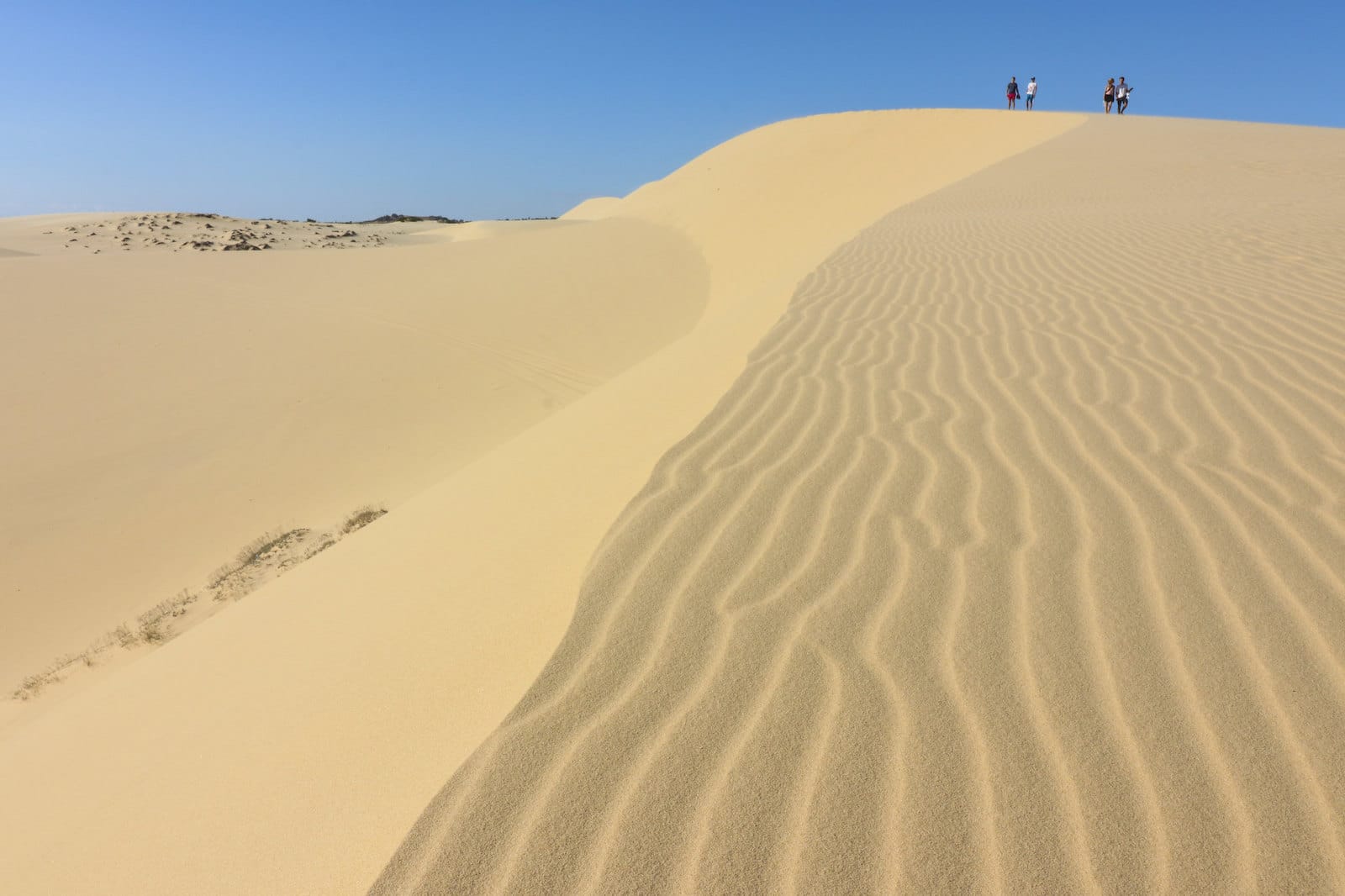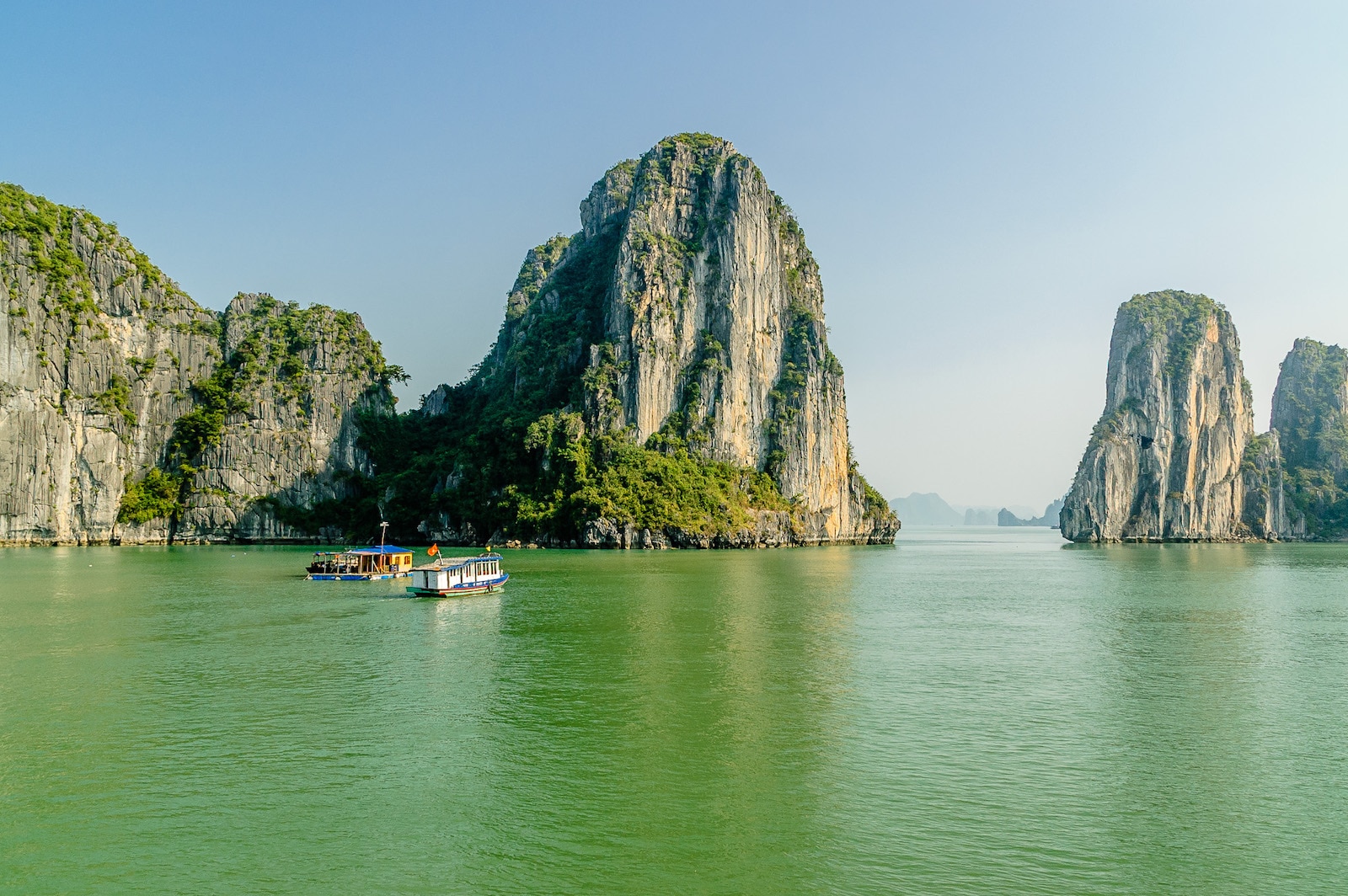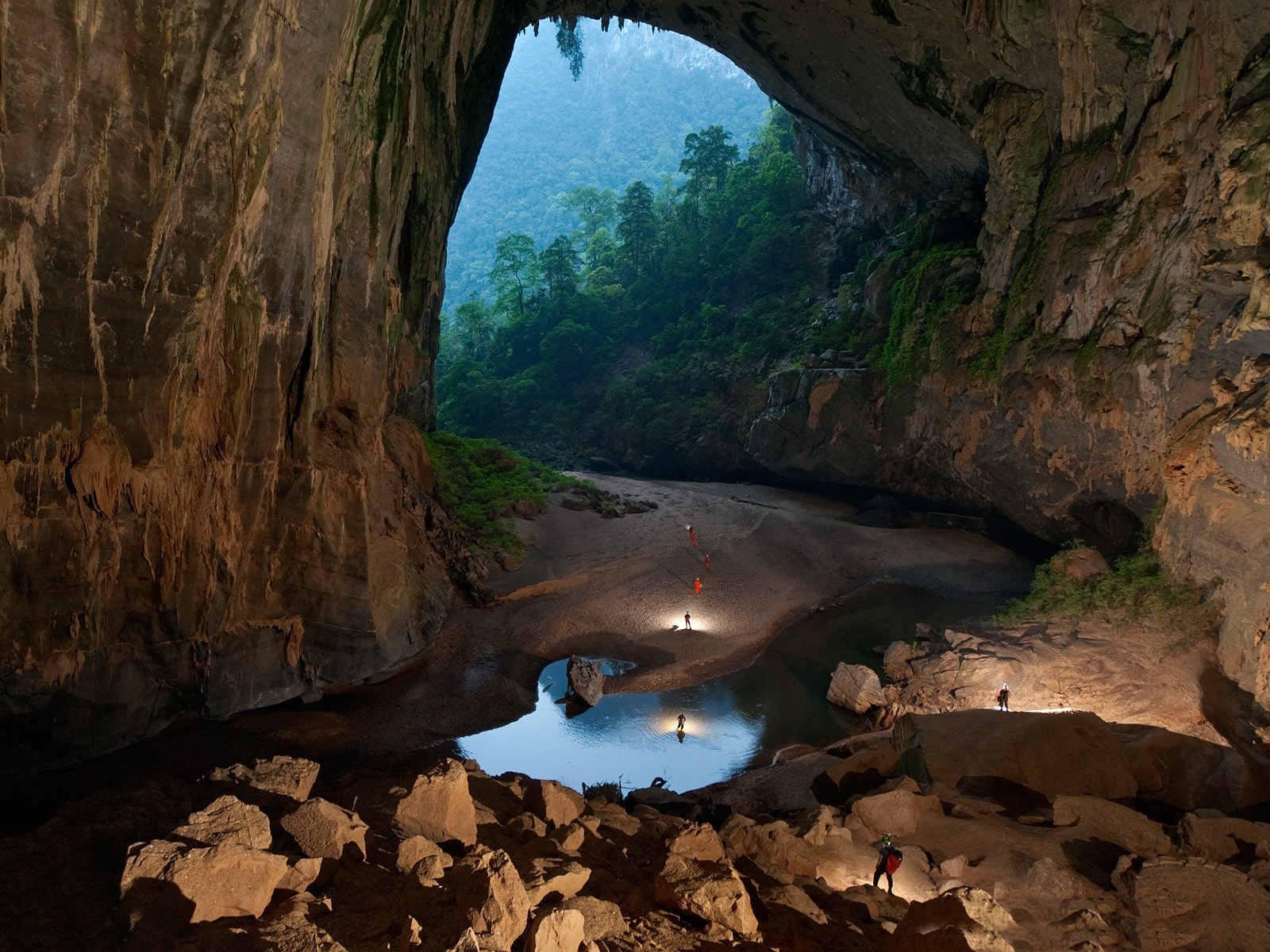Outside of Vietnam’s bustling cities is a countryside full of natural splendor. Wherever you go, there is always something breathtaking to soak in, thanks to Vietnam’s diverse and wonderful landscapes.
Several of Mother Nature’s stunning landmarks seem like natural wonders in the way they shape the land and stand out. For some time outside in the fresh air and a fun time exploring, consider the following destinations. And be on the lookout for manmade wonders too.
Fansipan

Fansipan is the highest mountain in all of the Indochinese Peninsula, comprised of Vietnam, Cambodia, and Laos. It stands at an extraordinary 3,147.3 meters/10,326 feet in the Lao Cai Province near Sapa and is one of the most visited places in all of northern Vietnam.
Back in the day, anyone who wanted to reach the top would have to do so on a two-day hike, but fortunately, there is now there is a 15-minute cable car to reach the top. You still have to hike uphill many steps and a trail for like 45 minutes to get to the peak. Or you can take an additional tram from the top of the cable car station that will get you to the peak.
There are restaurants, 360-degree views, and places to purchase souvenirs at the top of the cable-car station before heading back down the mountain. An amazing big buddha is close-by and other sculptures and pagodas line the trail up.
Sand Dunes

New explorers to Vietnam may be surprised to find its majestic dunes near Mui Ne. For a day trip unlike anything else in the country, a stop at the red and white dunes is in order.
Sunrise and sunset tours are offered for affordable prices and cover both dune areas and a peaceful little waterway called the Fairy Stream. The dunes can be reached independently, but most travelers choose to hire a private tour guide if they don’t want to be with a larger crowd on a bus or jeep.
White Sand Dunes

The White Sand Dunes are the larger of the two, offering views of rolling hills of fine, pristine sand that resembles the Sahara Desert. Formed by the coastal winds and waves, sand deposits are pushed inland over time to create these ever-growing dunes.
Early morning visits are great for taking a barefoot walk in the cool sand, while a sunset tour allows Mother Nature to show off with a stunning light display ideal for photography. Picnicking, sledding, and renting a dune buggy are great activities to do mid-day at the dunes when fewer tours are happening.
Red Sand Dunes

Located right off the main coastal road in Mui Ne, these rust-colored sandhills are often favored for photography due to their unique color shades. Many tourists like to arrange to be at the Red Sand Dunes for sunset, but each time of day out there has its highlights. Sand sledding is an enjoyable activity, and with each season, the scenery changes to form different hotspots for downhill fun.
On dune tours, a stop at the Fairy Stream is often a part of the itinerary. This shallow stream is about ankle-deep and is a great place to do a little hiking while wading under beautiful cliffs and lush scenery along the way.
Halong Bay

Covering an area of 1,500 square km, Halong Bay’s 1,600 limestone islands resting in the Gulf of Tonkin are a sight for sore eyes. Declared a UNESCO World Heritage Site in 1994, Halong Bay is home to some of Vietnam’s most unique scenery and biodiversity. The area is one of the most visited places in the country by tourists and offers plenty to see, taste, and do.
Whether you’re exploring Ha Long by boat cruise, on a walking tour with a camera, or checking out all the local eateries and attractions, the bay doesn’t disappoint new and returning visitors.
Hang Son Doong

Tucked away in Quang Bing Province within the Phong Nha-Ke Bang National Park, Son Doong became the world’s largest cave when it was further explored in 2009 by British divers. At its deepest, the cave reaches as much as 150 meters/490 feet underground and is about 9 kilometers/ 5.6 miles long.
Inside the cave is a whole other jungle in itself made up of animals and plants and varying illuminated and dark areas that can be exciting to investigate. Due to the rules of only 1,000 people entering the cave annually, visitors can only go inside by booking an experience with an organized tour, exclusively through the company Oxalis Adventure Tours.
Ban Gioc Waterfall

Located in Cao Bang Province and roughly eight hours from Hanoi, Ban Gioc is the largest in the country, standing at 30 meters/98 feet high and 300 meters/984 feet wide. With multiple levels and terraces throughout the waterfall, the view is impressive and one not to be missed.
The falls are starting to become more popular with international travelers, but for the most part, it’s still more frequently known as a hidden gem by locals. The best time to visit is in the fall, during September and October, but it’s open all year round.
There are several ways to get to Ban Gioc Waterfall, including motorbikes, group tours, and public transport.
Dong Nai River

Located in the Central Highlands and an impressive 586 km/364 miles, the Dong Nai River is the longest in Vietnam. The name “Dong Nai” translates to “shallow salt marsh” in English and has a basin of roughly 38,600 km2. With such a long path, the Dong Nai passes through several places and provinces such as: Lam Dong, Dak Nong, Binh Phuoc, Dong Nai, Binh Duong, and Ho Chi Minh City.
Ba Be Lake

Ba Be Lake is the largest natural lake in Vietnam and is situated in the Ba Be National Park inside Bac Kan Province. The lake itself is made up of three smaller lakes and rests in an area that has been labeled an “ASEAN Heritage Garden” since 2004 and, more recently, a UNESCO site.
There are many things to do for outdoors lovers all around the national park and lake, including hiking, kayaking, biking, fishing, and cave exploring. There are also a few waterfalls that are worth visiting within the region.
Ba Be Lake itself has a maximum length of 8km/5 miles, a width of 100-600 meters/330-1970 feet, and a surface area of 6.5km2. At its deepest, it goes down to 29 meters/95 feet. The area around the water has a diverse collection of flora and fauna, especially with so many species of butterflies.
From gushing waterfalls to hundreds of majestic limestone islets, the inherent beauty in Vietnam can be something out of a fairytale. These wonders are a great place to start your next adventure, but keep your eyes peeled and camera-ready for additional natural attractions along the way.


 7 Manmade Wonders of Vietnam
7 Manmade Wonders of Vietnam